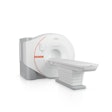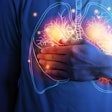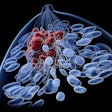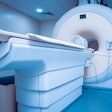ANAHEIM, CA - It's no secret that conventional cine MRI can accurately assess left ventricular volume and mass. The problem is that currently available techniques are comparatively slow and require ECG gating in order to average a sufficient number of heartbeats.
A new cardiac MRI system developed by Dr. Shuichiro Kaji and five colleagues at the Division of Cardiovascular Medicine at Stanford University in Stanford, CA, promises to slash the time factor to less than five minutes, while maintaining equivalent levels of accuracy.
Addressing this week's American College of Cardiology meeting in Anaheim, Kaji reported that the novel cardiac MRI system allows continuous real-time dynamic acquisition and display of any scan plane at up to 30 images per second without cardiac gating or breath-holding. In a recently concluded study, he compared the results of interactive real-time cardiac MRI with those of conventional cine MRI.
The Stanford group has added its system to a 1.5-tesla GE Signa scanner. According to Kaji, a workstation controls the computer of the MRI scanner, and a bus adapter allows rapid access to MR loading. "In order to accomplish real-time imaging, we use spiral acquisition," he explained. "In this particular study, six spiral interleaves constituted one complete image."
The researchers studied 10 healthy volunteers and 4 patients with congestive heart failure. All of the subjects were imaged in real-time and cine MRI on the same day in the short-axis orientation. Non-breathhold cine MR images were obtained with ECG gating and flow and respiratory compensation. Nine levels were obtained to encompass the entire left ventricle. The researchers measured left end-diastolic volume, left-end systolic volume, ejection fraction, and left ventricular mass.
Acquisition times using the interactive real-time cardiac MRI system were considerably shorter than for cine MRI -- 1 ± 0 versus 13 ± 2 minutes (p < 0.001), Kaji reported. Both cine and real-time cardiac MRI produced images of good quality in terms of spatial resolution, which enabled investigators to obtain accurate left-ventricle volumetric measurements.
Measurements of left-ventricular end-diastolic and end-systolic volume, ejection fraction, and left ventricular mass "showed close correlation with those obtained with conventional cine MRI," according to Kaji.
The investigators realize that further study is needed. For now, they believe that they have satisfactorily demonstrated the ability to acquire accurate measurements of left ventricular function and mass "in a time-efficient manner."
In addition to the greater comfort enjoyed by patients who might spend less time in the magnet while avoiding the unpleasantness of breath-holding, the benefits could include time to scan more patients per day, a concept sure to please revenue-conscious hospital executives and managed-care operators.
By Sheldon M. SternAuntMinnie.com contributing writer
March 16, 2000
Let AuntMinnie.com know what you think about this story.
Copyright © 2000 AuntMinnie.com


.fFmgij6Hin.png?auto=compress%2Cformat&fit=crop&h=100&q=70&w=100)



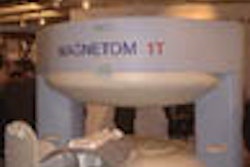
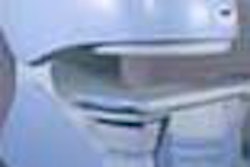
.fFmgij6Hin.png?auto=compress%2Cformat&fit=crop&h=167&q=70&w=250)



